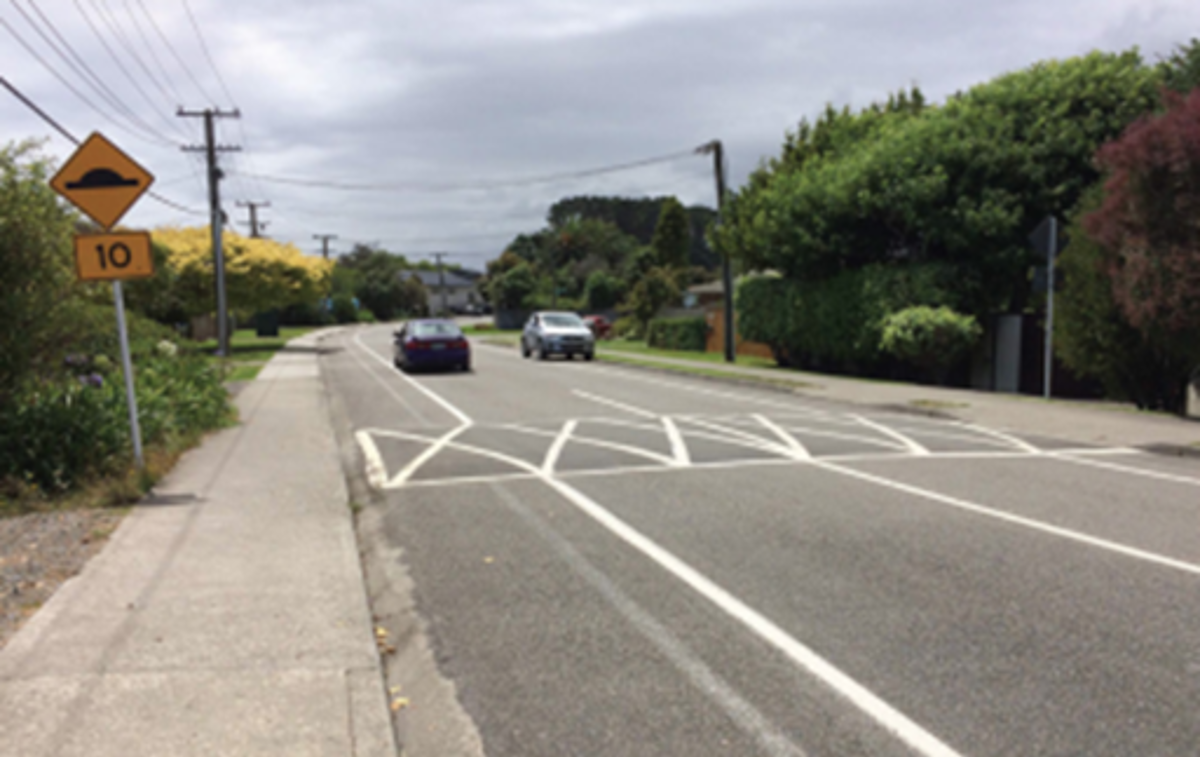- Dog and animal management
- Cemeteries
- Fees and charges
- Reusing, recycling, and waste
-
Roads, transport and parking
- EV charging network
- Roading
- Footpaths
- Parking
- Bike stands
- Abandoned vehicles
- Walking & cycling plan
- Business licences and permits
- Waters
- Noise control
- Grants and funding
- Council facilities for hire
- Council properties
Traffic calming and speed humps
A speed hump is a raised area built into the road surface. They're used to slow traffic, and make sure traffic speed is appropriate to the road environment, keeping all road users safe.
Speed humps are one of a number of ways of calming traffic, and a lot goes into deciding whether speed humps are appropriate for an area.
)
What we consider
While speed humps can help slow traffic down, there can be some disadvantages. They can:
- create more noise and pollution
- create problems for emergency vehicles, buses and heavy traffic
- be a nuisance to road users, and sometimes even damage vehicles
- cause slight travel time delay, encouraging motorists to use other routes
- in some cases, present a traffic hazard if vehicles don’t slow down.
How we make the decision
We sometimes get requests to install speed humps when members of our community are concerned about excessive speed in a certain area or street.
We're looking at a new process as part of our first Speed Management Plan. The new process will include checking if the speed hump request aligns with the high-benefit areas identified in the Speed Management Plan.
If there's alignment with the high-benefit areas, the request will be considered as part of our three-year implementation plan. If there's no alignment, the request will be deferred until the plan's reviewed.
Where speed humps aren't appropriate
Sometimes speed humps aren't the best solution. This includes:
- on busy urban through roads and rural roads
- on emergency vehicle access routes, and roads used frequently by heavy vehicles.
- where the other factors outlined above in 'What we consider' are present.
- Speed Hump fact sheet [PDF 425 KB]